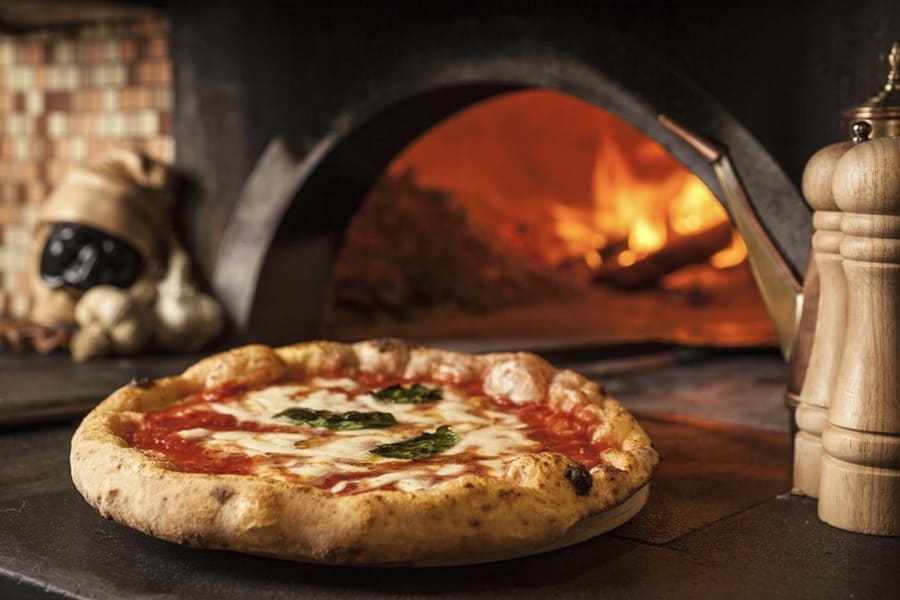Pizza, an irresistible dish beloved by millions, has grown to become a worldwide phenomenon. Its unique combination of simple ingredients—dough, sauce, and cheese—offers a platform for creativity that has captured the hearts and taste buds of people across the globe. Recognized instantly by its round shape, golden crust, and bubbling toppings, pizza is a symbol of comfort and indulgence. While it is easy to order pizza for delivery or even make it at home today, few truly understand the rich history and deep-rooted cultural significance behind this culinary masterpiece.
To grasp how pizza evolved into one of the world’s most popular dishes, we need to explore its origins, dating back to ancient civilizations. What began as a humble flatbread has become a global culinary icon, deeply intertwined with various cultures and historical events. Kitchen Warehouse continues this tradition by offering modern tools to create perfect pizzas at home or in restaurants.
Ancient Roots: From Flatbread to Pizza
The early origins of pizza can be traced back to the Stone Age, where primitive humans baked simple flatbreads over open flames. These flatbreads, which later became the foundation for pizza, were a staple food for ancient peoples due to their simplicity and versatility. As civilization advanced, so too did the recipes for flatbread.
One of the earliest known transformations occurred in Ancient Egypt, where the discovery of yeast revolutionized baking. The Egyptians used sourdough to create leavened bread, which led to the production of softer, airier flatbreads. To enhance the flavor, they began topping the bread with ingredients such as dates and cheese, which is considered one of the earliest forms of pizza.
Moving forward in history, the Ancient Greeks refined the Egyptian version of pizza by adding vegetables, herbs, and olive oil to the dough before baking. Their version was a popular dish that spread throughout the Mediterranean, making appearances even in the philosophical works of Plato.
Roman Innovation and Competing Origins
As pizza made its way to Ancient Rome, its evolution continued. However, there are multiple theories about how pizza came to be in the Roman Empire. One theory suggests that it was brought from Greece, and the Romans referred to it as “placenta,” a flatbread topped with ingredients such as honey and bay leaf. Another theory posits that Roman soldiers returning from Palestine introduced the recipe for “picea,” a dish consisting of chicken, garlic, nuts, cheese, and olive oil baked on flatbread.
Interestingly, the Scandinavians also lay claim to being early creators of pizza. During their sea voyages, Viking sailors are believed to have cooked flatbreads with toppings of meat, fish, vegetables, and spices in special frying pans, fueling the ongoing debate about pizza’s true origins. Regardless of where the dish first emerged, its significance in ancient culinary history is undeniable.

The Tomato Revolution: Pizza Becomes a Neapolitan Staple
The turning point for pizza came in 1522, when tomatoes were introduced to Europe after being brought back from the New World. Initially, Europeans were hesitant to embrace tomatoes, considering them to be poisonous. However, Neapolitan peasants, always searching for affordable and flavorful ingredients, soon began adding tomatoes to their flatbreads. This marked the beginning of the pizza we know today.
For many years, pizza was considered a peasant’s food, eaten by the working-class people of Naples. The simplicity of the ingredients—dough, tomatoes, olive oil, and herbs—made it accessible and filling for the masses. By the 17th century, pizza had become so popular in Naples that a new profession emerged: the pizzaiolo, a skilled pizza maker.
While pizza was thriving among the lower classes, it took time to break through social barriers and gain recognition at higher levels of society. King Ferdinand II of Naples played a crucial role in introducing pizza to the royal court. After tasting pizza from the famous pizzaiolo Antonio Testa, the king became enamored with the dish and wanted to share it with his wife. However, his wife refused, considering it unsuitable for royal dining. Undeterred, the king commissioned chef Gennaro Spadaccini to find ways to refine pizza for aristocratic consumption. Spadaccini improved the kneading process by using a bronze pestle instead of feet (a common practice at the time) and introduced the use of cutlery for eating pizza, making it more acceptable to the upper class.
The Birth of Iconic Pizza Recipes
Over time, pizza evolved into a dish with endless variations. Some of the most famous pizza recipes have fascinating stories behind them.
Pizza Margherita
Perhaps the most well-known pizza in the world, Pizza Margherita was named after Queen Margherita of Savoy in 1889. Created by the famous pizzaiolo Raffaele Esposito, this pizza was made to resemble the colors of the Italian flag: red (tomatoes), white (mozzarella), and green (basil). It was a patriotic gesture that endeared the pizza to the queen and cemented its place in culinary history.
Pizza Marinara
Contrary to what its name suggests, Pizza Marinara contains no seafood. The name refers to the simple, sailor-friendly ingredients—tomatoes, garlic, oregano, and olive oil—used in this traditional Neapolitan pizza. It became a favorite among the fishermen of Naples and remains a classic to this day.
Pepperoni Pizza
While pepperoni is often associated with Italian pizza, this beloved topping actually originated in the United States. Pepperoni is a type of American salami, made from a blend of pork and beef, seasoned with paprika and chili powder. Pepperoni pizza quickly became one of the most popular variations in America, and today it is the top-ordered pizza in the world.

Pizza as a Global Business
Pizza’s appeal is not just limited to its flavor; it is also a highly profitable business. The flexibility of pizza means it can be served in a variety of settings, from small local pizzerias to large restaurant chains, and even in the form of frozen pizza sold in grocery stores. In fact, pizza is one of the few businesses that can thrive at any scale, regardless of the economic climate.
The key to success in the pizza business lies in having the right equipment. The most essential tools for pizza production include:
- Pizza dough mixer
Ensures the dough is perfectly kneaded and ready for shaping. - Dough rolling machine
Helps flatten the dough evenly for consistent results. - Pizza oven
The heart of the operation, a good pizza oven makes all the difference in the final product. There are three main types of ovens used in pizzerias today:
Italian Wood-Fired Pizza Oven
A traditional oven that provides a smoky flavor and crispy crust, commonly found in artisanal pizzerias.
Deck Pizza Oven
Offers versatility and is ideal for restaurants needing to bake multiple pizzas at once, with consistent heat distribution.
Conveyor Pizza Oven
Used in high-volume settings, this oven ensures quick and efficient baking, making it ideal for fast-food pizzerias.
In the UAE, businesses such as Kitchen Warehouse supply pizza ovens tailored to the needs of various types of pizzerias. Their Wood and Gas Pizza Oven XL offers a combination of traditional wood-fired baking with the convenience of gas-powered cooking, making it a versatile choice for pizza professionals. Priced at 18,900 AED, this oven allows pizzerias to serve perfectly cooked pizzas that win over customers.
The Future of Pizza: A Dish That Will Always Be in Demand
Pizza’s enduring popularity shows no signs of slowing down. Whether it’s a classic Neapolitan Margherita, a hearty Pepperoni, or an adventurous new topping combination, pizza will continue to evolve with changing tastes and trends. With the rise of plant-based diets, there has been an increase in vegan pizza options, while the growing demand for gluten-free alternatives is inspiring new innovations in pizza crusts.
The pizza business, too, will remain a lucrative industry. From small, family-run pizzerias to large-scale frozen pizza production, the demand for pizza ensures that entrepreneurs have a reliable path to success. Whether eaten at a casual dinner with friends, ordered for a work lunch, or served at a special celebration, pizza is a dish that transcends class, culture, and occasion.
Conclusion
Pizza is much more than just dough, sauce, and toppings—it’s a culinary icon with a rich history that spans thousands of years and multiple civilizations. From the flatbreads of ancient Egypt to the wood-fired ovens of modern Naples, pizza has evolved into one of the most beloved dishes on the planet. With its infinite variety of flavors and combinations, pizza continues to inspire chefs and delight food lovers. Whether you’re eating a slice in a small local pizzeria or enjoying gourmet pizza at a high-end restaurant, one thing is certain: pizza is here to stay.

